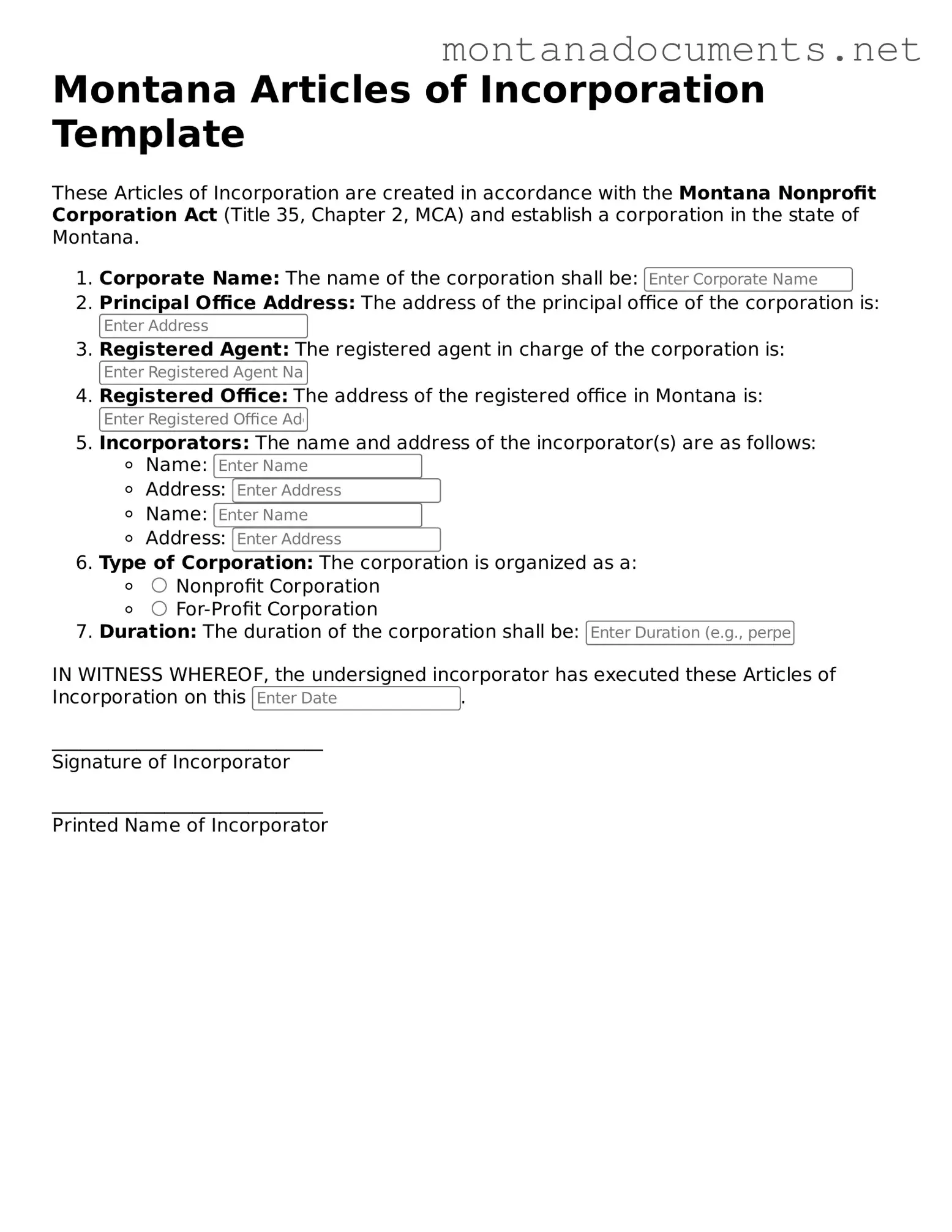The Montana Articles of Incorporation form shares similarities with the Certificate of Incorporation, which is used in many states across the U.S. This document serves as the foundational legal instrument for establishing a corporation. Like the Montana form, it outlines essential information about the corporation, such as its name, purpose, and the number of shares authorized. Both documents must be filed with the appropriate state authority to grant legal recognition to the corporation.
Another document akin to the Montana Articles of Incorporation is the Bylaws of a corporation. While the Articles provide basic information about the corporation’s structure, the Bylaws detail the internal rules and procedures governing the corporation’s operations. This includes guidelines for meetings, voting procedures, and the roles of officers and directors. Both documents are essential for the effective functioning of a corporation, with the Articles serving as a public declaration and the Bylaws guiding internal governance.
The Statement of Information is also comparable to the Montana Articles of Incorporation. This document is typically required to be filed shortly after incorporation and provides updated information about the corporation, such as its business address and the names of its officers. Like the Articles, the Statement of Information is a public record and is important for maintaining transparency with state authorities and the public.
In addition, the Certificate of Good Standing is similar in that it serves as official proof that a corporation has been legally formed and is compliant with state regulations. This document can be requested after the Articles of Incorporation have been filed and is often required for business transactions or when applying for loans. Both documents affirm the legitimacy of the corporation in the eyes of the law.
The Operating Agreement bears resemblance to the Montana Articles of Incorporation, particularly for Limited Liability Companies (LLCs). While the Articles establish the LLC's existence, the Operating Agreement outlines the management structure and operational procedures. This document is crucial for defining the relationships among members and addressing the distribution of profits and losses, similar to how the Articles define the corporate structure.
Another relevant document is the Partnership Agreement, which, while different in its application, serves a similar purpose for partnerships. This agreement details the roles, responsibilities, and profit-sharing arrangements among partners. Like the Articles of Incorporation for corporations, it formalizes the partnership’s structure and ensures all parties are on the same page regarding expectations and obligations.
The Business License can also be seen as a document that complements the Montana Articles of Incorporation. While the Articles establish the legal entity, the Business License permits the entity to operate within a specific jurisdiction. Both documents are necessary for compliance with local regulations and for the legal operation of a business.
Understanding various legal documents is essential for anyone looking to establish a corporation, as they each play distinct yet interconnected roles in the process. One such important document to consider is the POA, which helps in delegating authority when needed, ensuring that decisions regarding management and operations are made even in the absence of key individuals.
The Federal Employer Identification Number (EIN) application, or Form SS-4, is another document that shares a connection with the Articles of Incorporation. Once a corporation is formed, obtaining an EIN is essential for tax purposes and for hiring employees. While the Articles establish the corporation, the EIN application is a subsequent step that facilitates the corporation's financial operations.
Lastly, the Annual Report is similar to the Montana Articles of Incorporation in that it is a required filing that provides updated information about the corporation. This document typically includes details such as the current address, names of directors, and financial information. Both the Articles and the Annual Report are vital for ensuring that the corporation remains in good standing with state authorities and complies with ongoing reporting requirements.
